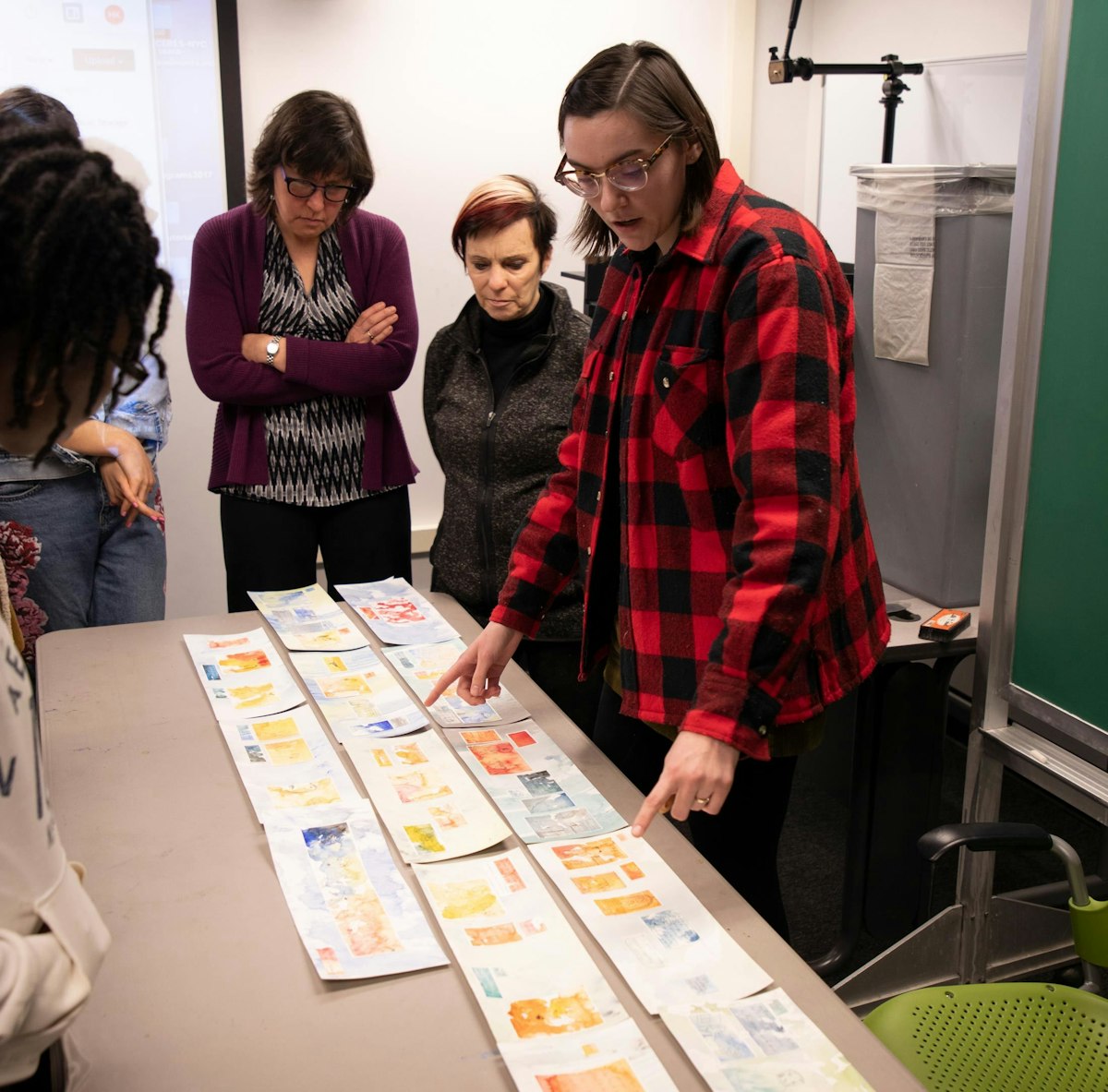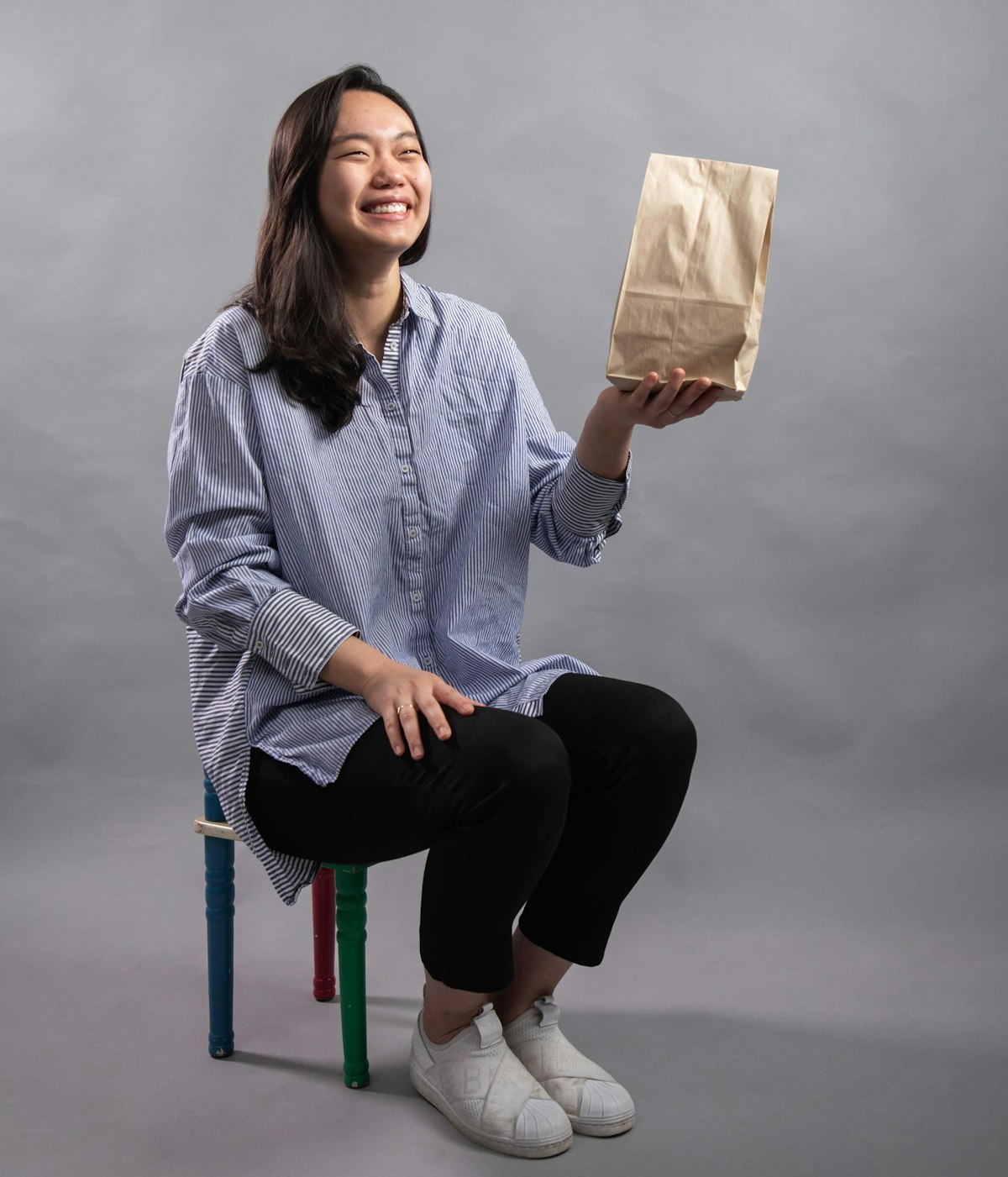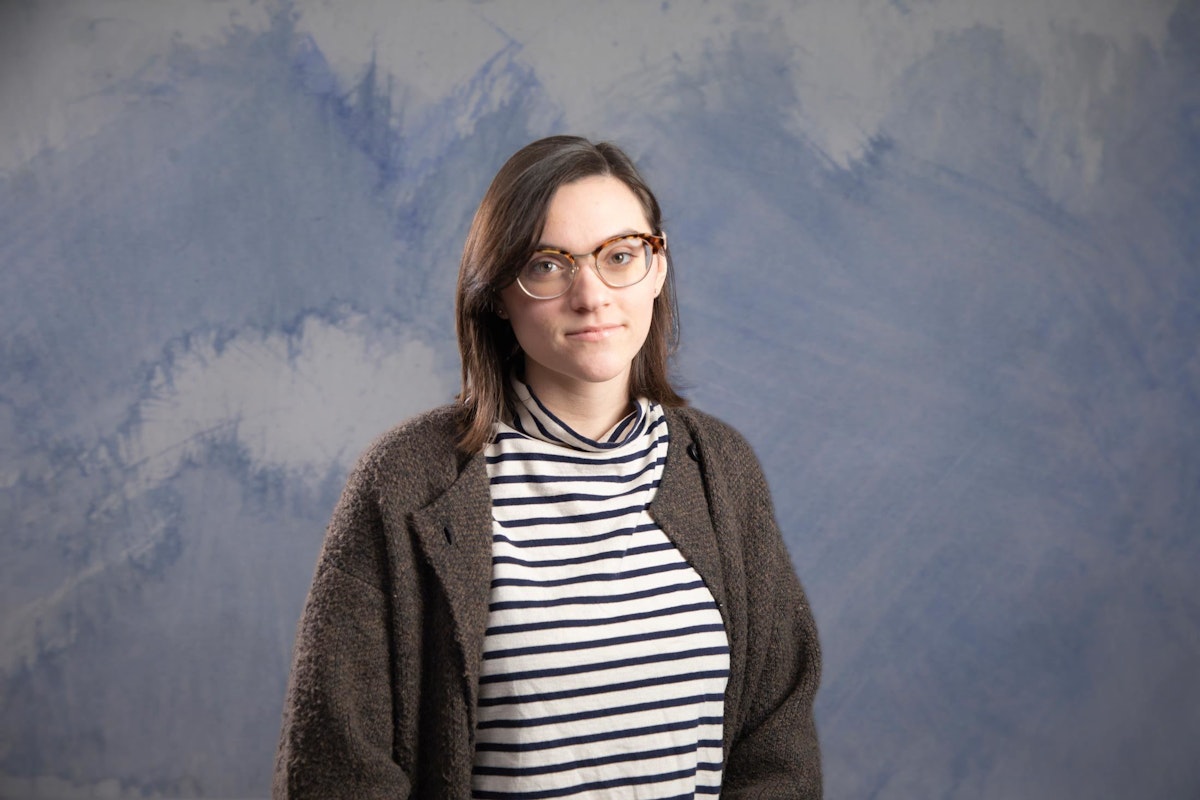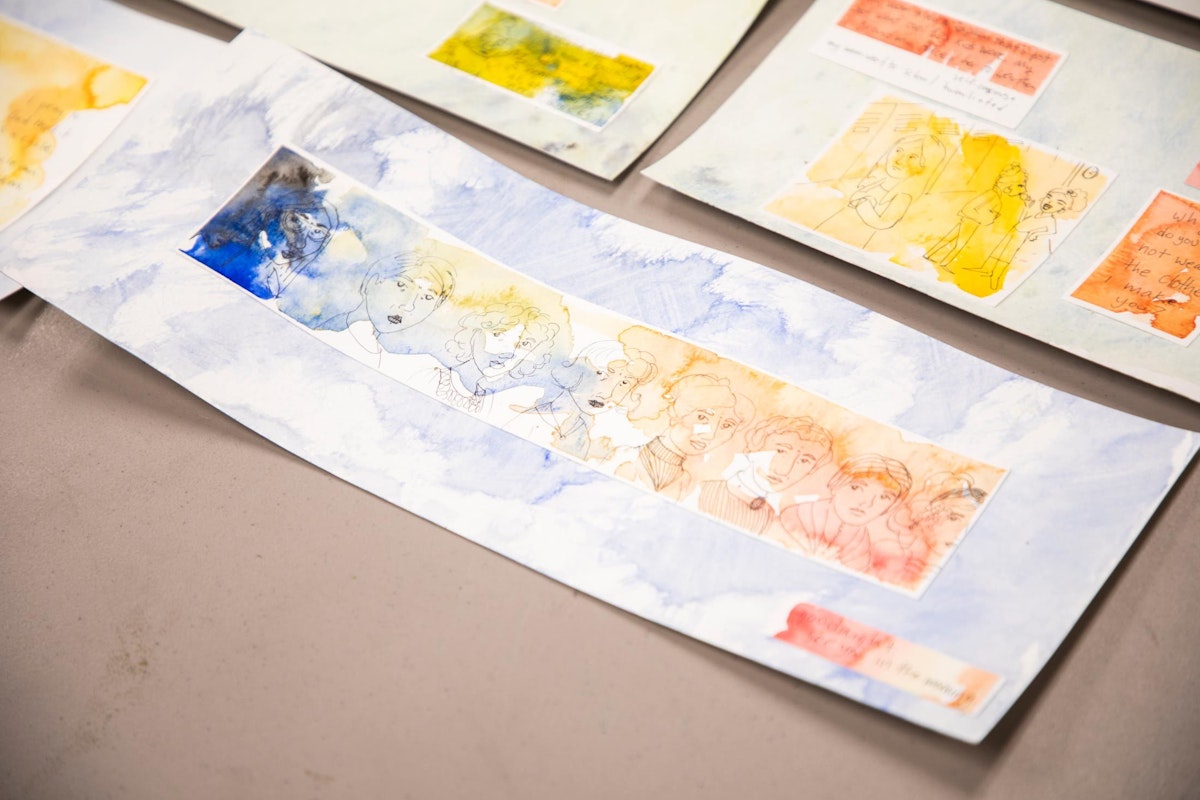The Heart of the Story: Narrative Forms at Stamps
During the Fall 2018 semester, professors Heidi Kumao and Holly Hughes co-taught Narrative Forms, a Stamps School of Art and Design course dedicated to fostering an informed exploration of visual storytelling.
Students in the course created work across a wide range of medias, including animation, comics, artists books, video games, art films, performance, blogs, and installation work.

“We have a growing number of students who are interested in narrative across a wide variety of genres and medias,” said Hughes. “This is the first class designed especially to help students develop their storytelling skills within a visual arts context.”
For her final class project, Grace Cho (BFA ‘19) created an autobiographical illustrated digital book entitled One Time I Brought Lunch From Home about her experiences as a first generation Korean immigrant experiencing assimilation pressure from her third-grade peers in elementary school. After brining a lovingly packed lunch of home-made kimbap to school, Cho is teased by her classmates: “what is that? It smells weird.” The taunting provoked Cho to create a new, “American” shopping list for her mom, including peanut butter, baby carrots, and goldfish crackers.

According to Cho, Narrative Forms helped her think through the stories she wanted to tell and what was important for her to share with the world. “In tandem with my Integrative Project course, this class helped me recognize that I am most interested in making work about fighting racial discrimination, stereotypes, and inequity through open communication and empathy,” she said.
For Kara Calvert (BFA ‘19), the stories that were important for her to tell were also deeply personal, an aspect of the class that proved to be a rewarding challenge. For her final class project, Calvert created an artists book in watercolor and ink entitled Heirloom. In it, Calvert explores the ways each generation of women passes down and inherits negative body image within the complex closeness of family life. “It's hard to let the stories go and have them subject to critique,” Calvert says.

Both Calvert and Cho valued the writing exercises that were part of the course. “Sometimes we were all given the same prompt to write about, but everyone took it and made it their own,” said Cho. “It’s pretty cool to get to see how differently we perceive the world around us.”
“The push to rewrite, redo, and remake with concrete deadlines has influenced my artistic practice for the better,” Calvert added. “This class has also taught me that there's nothing wrong with just going forward with an idea and making it work.”

In a reflective moment during the final critique, Kumao said: “The quality of the work and your iterative process has been really high. You’ve all integrated your skills and interests into powerful new work. It’s been an incredible to see it all unfold.”
